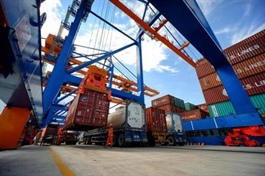Prices of Vietnam’s seafood exports plunge
Prices of Vietnam’s seafood exports plunge
Vietnam has seen a sharp decline in the prices of its key seafood exports, which is currently the biggest issue confronting local seafood producers and exporters, according to the Vietnam Association of Seafood Exporters and Producers (VASEP).

Workers process shrimp for export at a company in central Vietnam. Photo: Tan Luc / Tuoi Tre |
In particular, the average price of white-leg shrimp exports to the U.S. tumbled to US$10 per kilogram from the peak of $14.7 per kilogram at the end of 2020.
Meanwhile, tra fish (pangasius) export prices plummeted to $2.80 from the record of $5.26 per kilogram.
In 2023, Vietnam's seafood exports to key markets, including the U.S., Japan, China, the European Union (EU), and South Korea, experienced a decline ranging from 11 percent to 28 percent compared to 2022.
VASEP reported that high inflation, falling demand, high inventories, and low prices sent the seafood export value dropping 17 percent over 2022 to reach $9 billion last year.
Exports of crucial seafood products saw a decrease of 16-25 percent, with shrimp and tra fish experiencing the most significant declines at 20 percent and 25 percent, respectively.
The Vietnamese shrimp sector is also facing fierce competition from foreign rivals, such as Ecuador and India, which have boosted shrimp exports at prices lower than those of Vietnam.
Meanwhile, domestic shrimp farming and processing have declined as local farmers suffer losses given high feed and shrimp post-larva costs.
VASEP blamed the plunge in tra fish prices on the import markets’ handling of stocks, resulting in smaller imports.
The association forecast seafood sales would remain low this year, meaning export prices will continue to fall.
The ‘yellow card,' a kind of warning issued by the European Commission to countries involved in illegal, unreported, and unregulated fishing, remains a challenge to Vietnam’s seafood sector.
If the ‘yellow card’ is not removed this year, exports to the EU will remain stagnant, according to VASEP.
However, the demand of foreign firms, especially those from Japan, for outsourcing services in Vietnam may increase following labor issues in China and the Chinese ban on Japanese seafood imports.
VASEP hopes Vietnam’s seafood shipments will gradually recover in 2024 and turn positive in the second half of this year to hit $9.5-10 billion.
Of the total, shrimp exports were expected to reach $4 billion, tra fish accounting for $1.9 billion, and caught seafood products making up $3.6-3.8 billion.



























